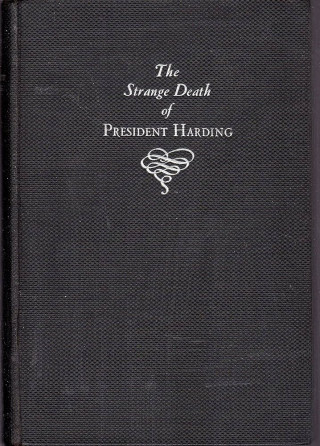When President Warren G. Harding died suddenly on August 2, 1923, the nation was shocked and baffled. Not only was the handsome, popular president relatively young, at age 57, but to the general public, he appeared far more fit than many of his predecessors. “In physique, President Harding was unquestionably one of the most powerfully built occupants of the White House of modern times,” wrote the Washington, D.C. Evening Star the day after his death. “He at all times gave every evidence of good health and good spirits.”
Almost immediately, rumors of foul play began to circulate. Some suggested the president had been murdered, others that he had committed suicide. Though historians today generally agree that Harding died of natural causes, suspicions to the contrary would linger for decades, fueling several of the most durable conspiracy theories in American history.
Harding’s death came at a point when the United States may have been especially susceptible to such theories. “In the 1920s, a lot of Americans were looking back on World War I and thinking they’d been sold a bill of goods, that the government had whipped the country into a frenzy and gotten it into a war when it wasn’t necessary,” says Kathryn Olmsted, a historian at the University of California, Davis, and the author of Real Enemies: Conspiracy Theories and American Democracy, World War I to 9/11. Later, she adds, when the public began to learn about all the “skullduggery, lying and criminal activity” that had occurred during the Harding administration, it was easy to wonder if the president had been a victim of his own corrupt cronies, collectively known as the “Ohio gang.”
At the time of his death, however, Harding was largely revered by the American public, which had elected him and his Republican running mate, Calvin Coolidge, in a November 1920 landslide. Formerly an Ohio newspaper publisher and one-term senator, Harding had promised a return to “normalcy” following the horrors of World War I—and he seemed to be delivering. While the U.S. economy suffered a serious recession in 1920 and 1921, by 1923 it was booming, setting the stage for the decade that came to be known as the Roaring Twenties.
The first official news of Harding’s death came at 7:51 p.m. on August 2, in a three-sentence bulletin signed by five doctors, including his personal physician, Charles E. Sawyer, a homeopath who shared the president’s hometown of Marion, Ohio. Harding had died “instantaneously and without warning and while conversing with members of his family,” the statement said, giving the probable cause as an apoplexy, or stroke. “During the day,” it added, “he had been free from discomfort, and there was every justification for anticipating a prompt recovery.”
